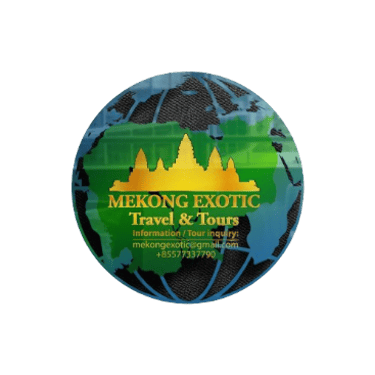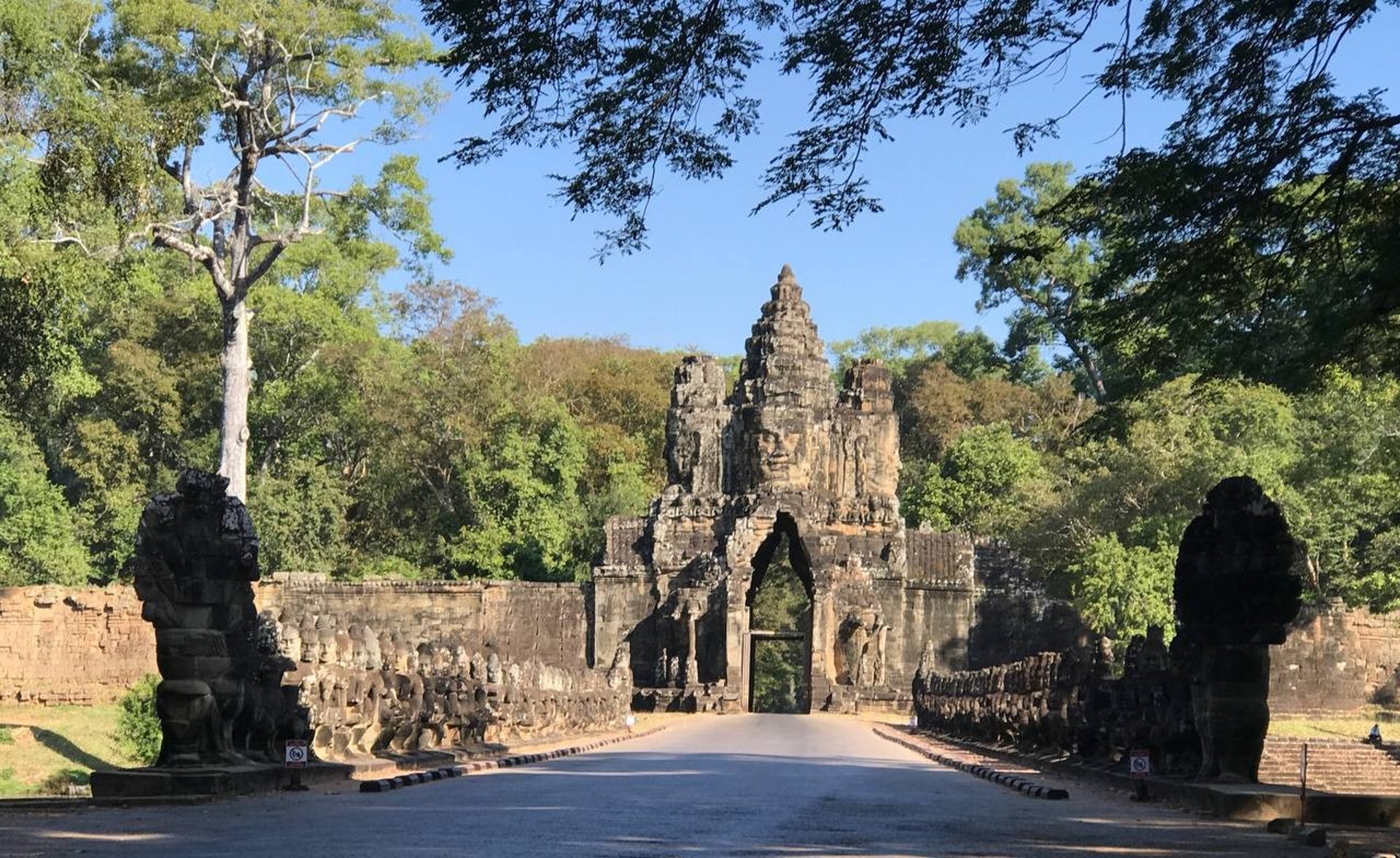
Siem Reap
Angkor Thom City: is the greatest capital city of King Jayavarman VII. It is surrounded by a strong wall 12kms and full of wooden houses and irrigation systems with about 1 million people lived inside when it was in used. South Gate of Angkor Thom City is one of the 5 gates of the strong wall surrounding Angkor Thom city. The gate, decorated with 4 faces of Lokesvara, looks to 4 directions and 54 statues of gods and demons pulling the snake on each side.
Bayon temple (Jaya Kiri): is the artificial temple mountain with 49 towers and every tower has 4 giant faces; look to 4 directions and was used as the royalist temple and the state temple of King Jayavarman VII.
Baphoun temple: it was built in mid of 11th century (1054) in the middle of capital city Yasodarapura II and dedicated to god Shiva. It was changed to Buddhist temple in 16th century and a big statue of Buddha reclining was built on the base of the 2nd level at the western side.
Phimeanakas temple(Palace in the Sky): was built in the middle of the royal Palace in the late 10th century and was used as the private temple for kings and royal family to celebrate ceremonies to pray to god Shiva.
The Terrace of the Leper King: was built in late of 12th century and used as the crematorium with the statue of Yamaracha (god of death and judgment) on the top of the building. And because the Statue of Yamaracha with the right hand side has no finger and leg has no toe , so local people believe that it is the statue of the king who got leprosy.
Ta Prohm temple(TomRaider temple): was built in 1186 and used the royal monastery and the memorial temple to the king’s mother. The temple still remains the giant trees more than 300 years to 500 years growing on the top of the temple.
Pre Rup temple(Changing Body): it was built in the late of 10th century (961) of bricks with laterite stone in the foundation. It is the artificial temple mountain and dedicated to Shiva and used as the state temple of King Rajendravarman II .
Banteay Samre temple: this small beautiful temple was built during the reign of King Suryavarman II same time to Angkor Wat and dedicated to the same god Vishnu. And was used as the memorial temple to king’s father.
Banteay Srey temple(City of Women temple): was built in 967, It is the most beautiful temple of all temples in the whole Cambodia. It is the jewel of Khmer art. It was built the best quality Pink or yellow colored sandstone.
Beng Mealea temple(Jungle temple): was built at the same time as Angkor Wat. It is the memorial temple to the king’s mother. The temple is still covered by big trees and vines. same to others temples in Angkor archaeological park were discovered for the first time by the French.
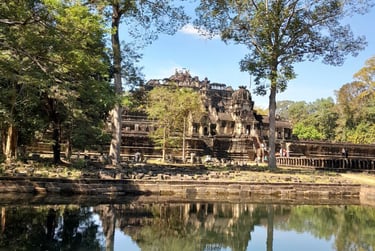

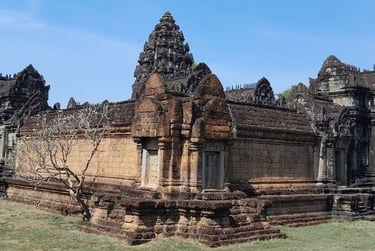

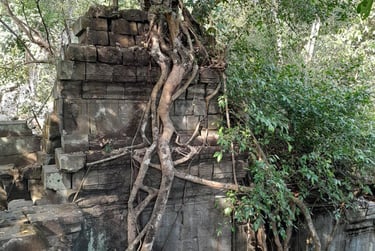

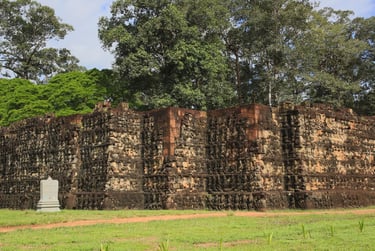


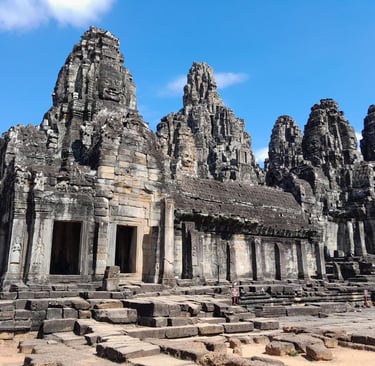
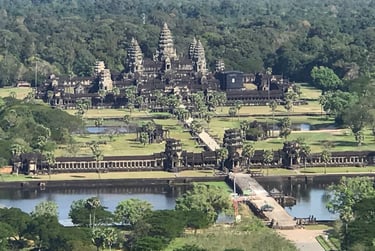

Angkor Wat: the largest religious building in the world and the masterpiece of Khmer Architecture. It was designed and perfectly built to conform to astronomy and Hindu beliefs. It was registered as the world’s heritage site under control by UNESCO IN 14th December 1992.
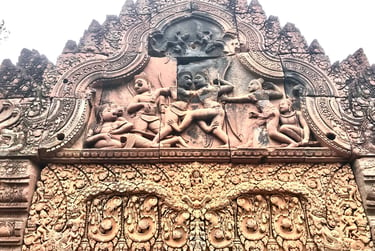


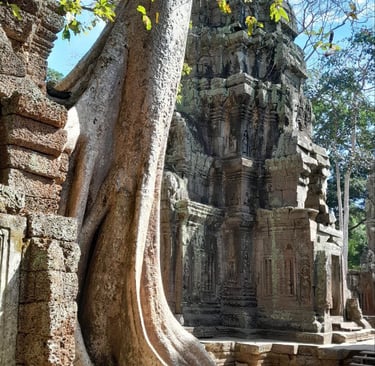
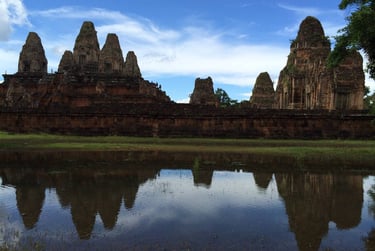

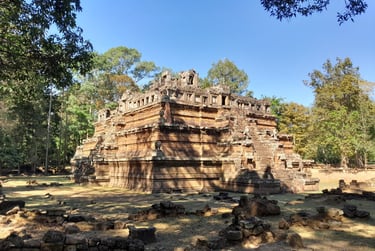

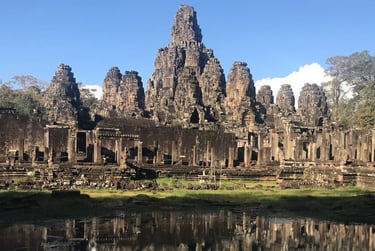

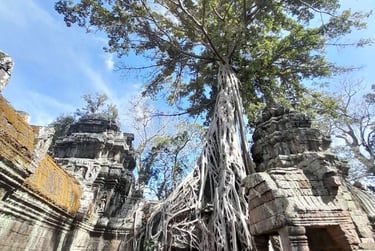



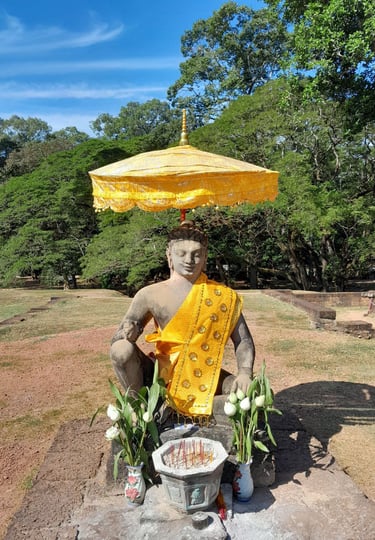


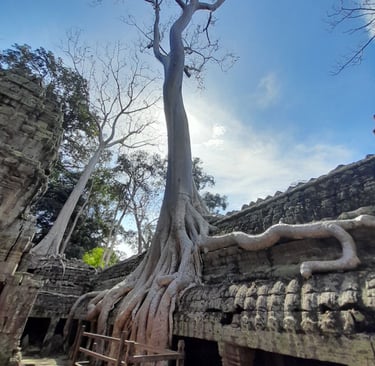
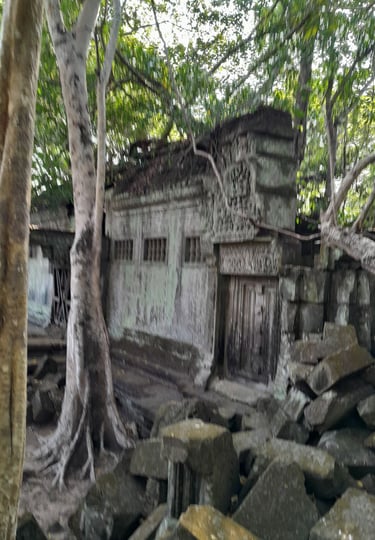

Artisan Angkor: is a handicraft center and a school that collects poor people from the countryside to get training in the skills of doing stone , wood, silver and brass carvings, silk painting…
Santuer D’Angkor: is a very interesting site to see how Balm, oil , candles , soap and other groceries made by hands from natural trees and flowers.
Preah Promroth Pagoda: is a most beautiful Buddhist pagoda in Siem Reap town. It was built in 1371 AD with a big statue of Buddha reclining inside the main holy shrine.
Kampong Khdei Bridge: is an ancient bridge built of laterite stone in late of 12th century during the reign of King Jayavarman VII on the ancient highway from Angkor City to Bakan. Until now the bridge is still in good condition and in used.
Silk Farm: located 17 kms from Siem Reap town where you can visit and learn the whole process how silk made by hands in Cambodia.
Kulen mountain (Mahendravaravata): located 65kms from Siem Reap town where it was used as the capital city of King Jayavarman II from 802 AD with thousand linga carvings in the riverbed many Hindu temples were built for god Shiva and beautiful waterfall. In 16th century one big statue of Buddha was carved from a single big rock on the top of the mountain.
Khbal Spean (head of bridge): it is the holy river represented to Ganga river in India with thousand linga and Hindu gods carved in the riverbed on the top of Khbal Spean mountain.
West Barray: is the largest artificial lake in Siem Reap. It is 2.2 kms wide by 8 kms long was constructed in mid of 11th century and used as water reservoir for irrigation systems.
Terrace of Elephants: is 350ms length and 15ms width with wooden building on the roof with elephants decorated on the base and it was used as the reception hall of King Jayavarman VII when the religious ceremonies were celebrated in the opened field in the front of the terrace.
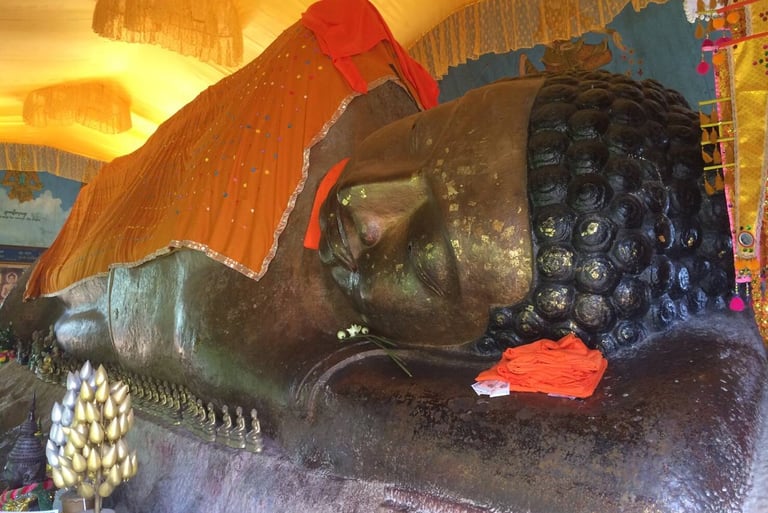

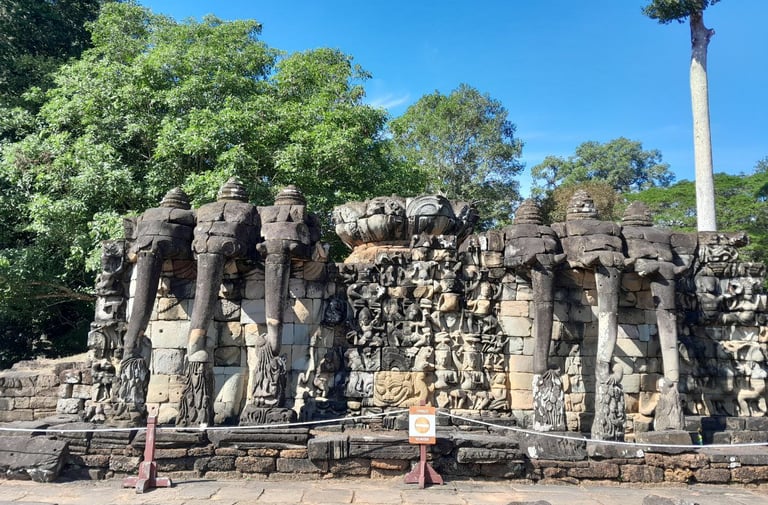



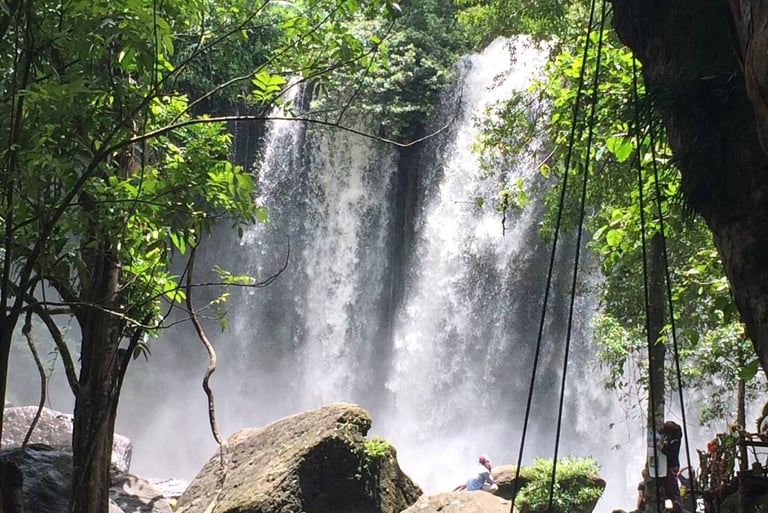


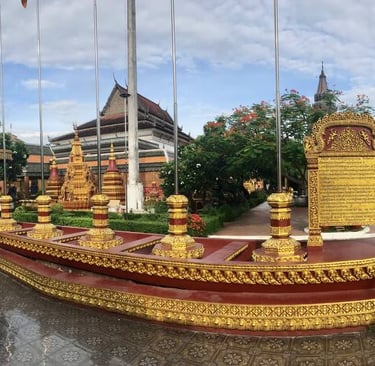
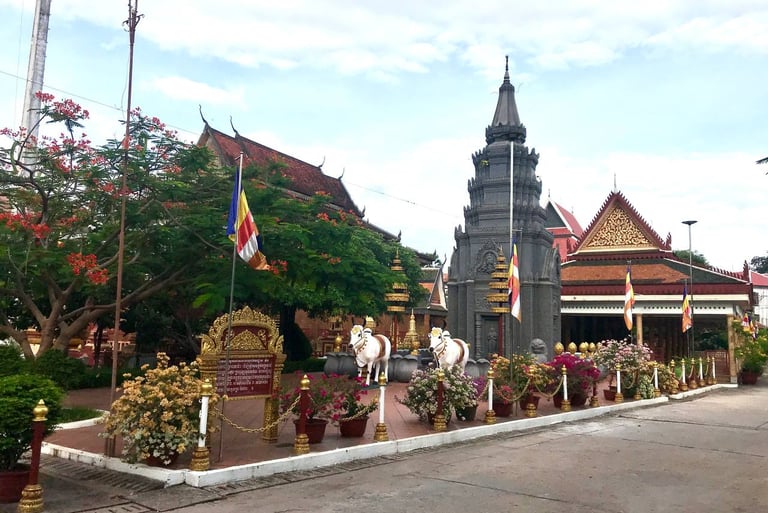

Kampong Khleang Village: it is the biggest fishing village of 170 fishing villages of Tonle Sap lake. Located 55kms from Siem Reap town where you see the houses were built on stilts and houses built supported by boats or bamboos floating up on the lake.
ChongKhneas floating village: located 12kms from Siem Reap where the houses, school, church and offices were built supported by boats or bamboos floating up on the lake to be easy to move from one place to another place follow the flood of Tonle Sap lake.
Kampong Phluk village: is a fishing village on the bank of Tonle Sap lake located 28kms southeast of Siem Reap where you can experience the living conditions of this fishermen and their houses were built on stilts 3ms to 8 ms higher than ground to avoid from flood of Tonle Sap lake in Raining season.
Your contact is very important to us and we will respond to you very shortly. Our support team will help you to get in touch with us, find the answer to your questions and be up to date with the latest news and updates!
📍Address:#A3, St110BT, ChomChao3, 120911, Phnom Penh, Cambodia
☎Telephone Number: + 855 77337790, + 855 888348379
( Also Available on: WhatsApp, Line, Telegram, Facebook, Instagram )
📧Emails : mekongexotic@gmail.com
